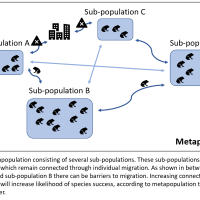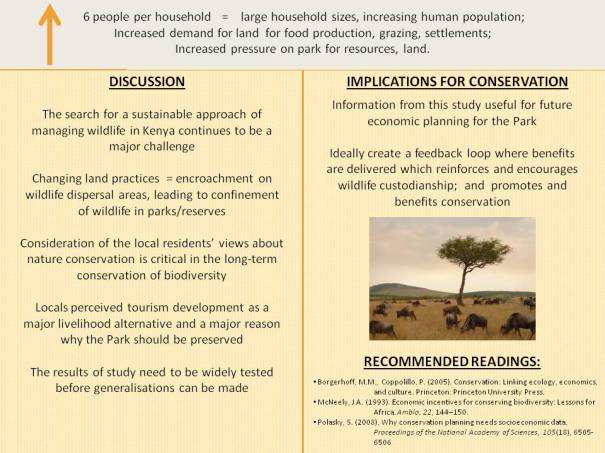Is Yellowstone National Park a ‘pristine’ environment?
Posted: May 1, 2017 Filed under: 2017, ERES525 | Tags: environment, Management, national park, nature Leave a commentYellowstone National Park was created in 1872. It was the world’s first federally protected natural area. Located in Wyoming, the park spans 2.2 million acres and is known for its geothermal features, such as the Old Faithful geyser (NPS, 2017). There are over 400 species of animals including bears, bison and wolves, as well as over 1100 native plant species (Frank & McNaughton, 1992). Along with the wide range of diverse plant and animal species, Yellowstone has a long history of human habitation. If ‘pristine wilderness’ is defined as remaining in a pure state without human alteration (YourDictionary, 2017), can Yellowstone be considered pristine?
In 1870 when the nine members of the Washburn party embarked on the first official expedition of Yellowstone, they dismissed any signs of human habitation, describing it as primeval wilderness “never trodden by human footsteps” (Schullery & Whittlesey, 2003)(Spence, 1999). Sightings of Native Americans from the Shoshone, Blackfeet, Crow and Bannock tribes, were dismissed as they were considered “vanishing Indians” (Spence, 1999). Henry Washburn and Nathaniel Langford, leaders of the party, officially declared the area to be pristine wilderness (Spence, 1999).
Yellowstone clearly wasn’t untouched by humans, even before it was declared a national park. Rather, it was an area that had been moulded by thousands of years of human habitation and use (Spence, 1999). Evidence of this dates back to over 11,000 years ago when Paleo-Indian groups moved into the area at the end of the last ice age (Spence, 1999). Small bands of hunter/gatherers made use of the area leaving behind evidence of potsherds and obsidian quarries. These groups also altered their environment utilising controlled burns to maintain plant and animal habitats for agricultural purposes (Spence, 1999).

Figure 1: A Shoshone Tribe encampment in what was to become Yellowstone National Park, 1870.
The idea of pristine wilderness preceded the creation of Yellowstone. The ‘myth of wilderness’ is a cultural creation that came about through the romanticism of nature. The roots of this idea can be traced back to the writings of John Muir (Friskics, 2008). He described wilderness as a sacred space, ingraining upon the American mind the superiority of pristine wilderness rather than the coexistence between humans and nature (Marris, 2011). This seeming superiority of pristine wilderness was such a powerful idea that evidence of human habitation was often ignored.
Another philosophy, known as Cartesian dualism, was also serving to separate humans from nature during that period. Cartesian dualism is a western view that deemed nature as inferior along with indigenous people who remained entwined with it and its existence was for human consumption and control (Haila, 2000). Thus, to conserve naturally pure areas it was thought that humans needed to be removed from nature, resulting in the eviction of all four native tribes inhabiting Yellowstone in 1879.
The majority of scientists today would likely claim that national parks are not historically pristine. Humans are so deeply involved in the management and visitation of these sites. In 2012, 3.4 million people visited Yellowstone (NPS, 2017). Ecosystems within the park are managed, monitored and even altered. For instance, the Grey Wolf was hunted to extinction through a predator control program in 1926, only to bring it back by way of reintroduction in 1995 (Smith et al, 2003).
Yellowstone exists as a “public park … for the benefit and enjoyment of people”; it does not exist to be safeguarded from them.

Figure 2: Some of the over three million tourists to visit Yellowstone, 2015
There are very few landscapes that could still be considered pristine; perhaps none. Those that haven’t been altered directly by humans are now being affected by anthropogenic climate change.
We must rethink what pristine means at an environmental level.
A present day pristine environment could now be considered a “functioning ecosystem, largely intact and minimized human impacts” (Cronon, 1996). Many areas have been disturbed only to recover later. These areas display no obvious signs of human impacts; perhaps these are as pristine as it gets. These places contain plant and animal species that would be there in the absence of habitat loss, hunting, invasive species and other human-driven threats (Cronon, 1996).
Yellowstone, like all other national parks can’t be considered a pristine environment even by today’s definitions. Given the long history of human habitation, continued management, and the maintenance of the park for human enjoyment, it is anything but untouched. However, this doesn’t mean that it should be valued any less than actual pristine environments. If only truly pristine environments are worth protecting, we would have nothing left. Yellowstone contains a high diversity and density of our plants and animals worldwide (Waller (edt), 2012). Non-pristine environments like parks are often more accessible and are therefore the ones that humans will interact with and value greater. Gaining appreciation for nature whether it be pristine or not and if we are part of it or not will motivate future generations to protect it.
Kate Hunt
Works Cited
National Park Service (NPS), (2017). Modern Management. Retrieved March 22, 2017, from National Park Service Yellowstone: https://www.nps.gov/yell/learn/historyculture/modernmanagement.htm
Cronon, W. (1996). The trouble with Wilderness: Or, getting back to the wrong wilderness. Environmental History, 1(1), 7-28.
Frank, D. A. (1992). The Ecology of Plants, Large Mammalian Herbivores, and Drought in Yellowstone National Park. Ecology, 73(6), 2043-2058.
Friskics, S. (2008). The Twofold Myth of Pristine Wilderness: Misreading the Wilderness Act in Terms of Purity . Environmental Ethics, 381-399.
Haila, Y. (2000). Beyond the Nature-Culture Dualism. Biology and Philosophy, 15(2), 155-175.
Marris, E. (2011). The Yellowstone Model. In E. Marris, Rambunctious Garden (pp. 17-37). New York: Bloomsbury.
National Park Service (NPS). (2016). Guidance for Protecting Yellowstone. Retrieved March 20, 2017, from Yellowstone: https://www.nps.gov/yell/learn/management/protecting-yellowstone.htm
Schullery, P. &. (2003). Myth and History in the Creation of Yellowstone National Park. Lincoln: University of Nebraska Press .
Smith, D. W. (2003). Yellowstone after Wolves . BioScience, 53(4), 330-340.
Spence, M. (1999). Before the Wilderness: Native Peoples and Yellowstone. In M. Spence, Dispossessing the wilderness: Indian removal and the making of the national parks (pp. 41-54). New York: Oxford Press.
Spence, M. D. (2000). Indian Removal and the Making of the National Parks. In M. Spence, Dispossessing the wilderness . New York: Oxford Press.
Waller, J. (edt). (2012). Yellowstone Science. Wyoming: Yellowstone Association.
YourDictionary. (2017). Dictionary Definitions Pristine. Retrieved 2017, from Your Dictionary: http://www.yourdictionary.com/pristine
Figure 1: Retrieved 29th April 2017, from: http://www.yellowstonepark.com/yellowstone-sheepeater-tribe-ledgend/.
Figure 2: Retrieved 29th April 2017, from: http://www.dailymail.co.uk/travel/travel_news/article-2991863/Shocking-photos-reveal-destruction-Yellowstone-National-Park-hot-spring-tourists-throwing-coins-luck.html.
Socio-economics and wildlife conservation of a peri-urban national park in central Kenya – Synopsis by Mya Gaby
Posted: May 20, 2014 Filed under: 2014, BIOL420, Speed Paper Synopsis | Tags: Africa, conservation, economics, ecotourism, Kenya, national park, Oldoinyo Sapuk National Park, socio-economics, wildlife Leave a commentPlease click here to read original paper.
Please click here to view original photo of local Kenyans (under the introduction section), all other photos are the reviewers own.






